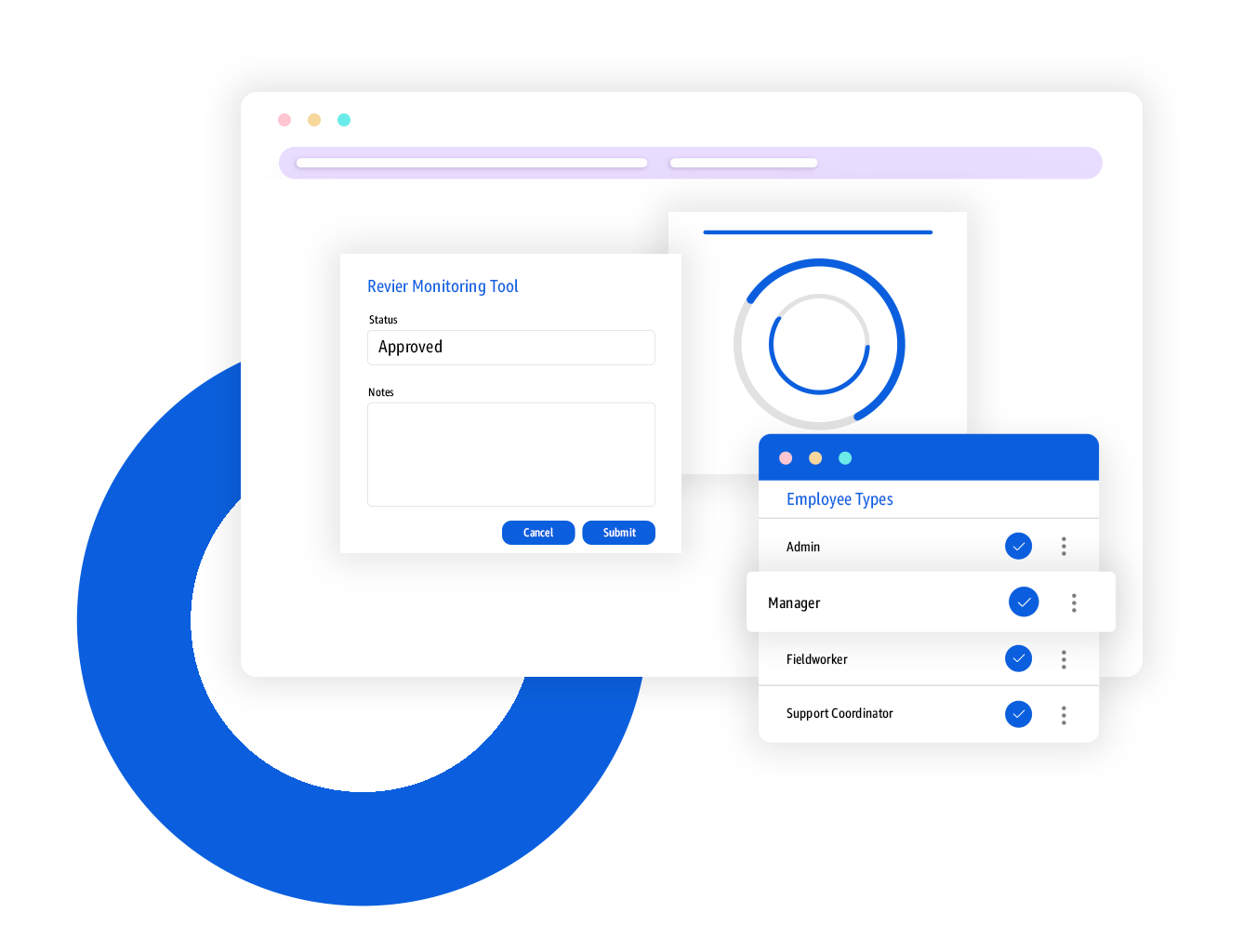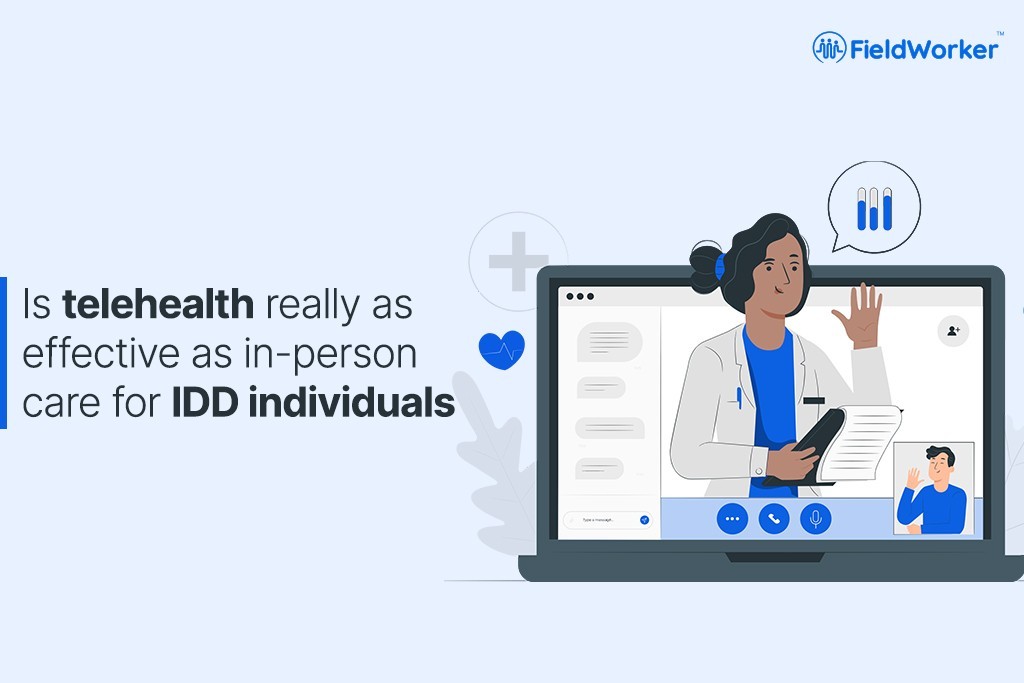Telehealth, a term used interchangeably with telemedicine, is a form of remote healthcare where technology is used by patients and clinicians to improve a patient’s health — all while sitting in the comfort of their homes.
The last few years, especially due to the Covid-19 pandemic, have led to a phenomenal rise in the telehealth industry. This shift was so quick and drastic that it led people to wonder whether telehealth is as good as in-person care, especially for IDD individuals. There have been various studies that found that in the right context, telehealth does not compromise the effectiveness of clinical care as compared to in-person care.
Telehealth technologies: There are 3 main different types of telehealth technologies.
- Synchronous telehealth: A live video or phone call interaction between caregivers and patients. It’s an effective way to communicate but there are limitations like taking blood samples etc, which can’t be done through a video.
- Remote patient monitoring: To overcome the limitations of the synchronous method, patients can use various devices to measure blood pressure, temperature, heart rate, etc.
- Synchronous monitoring: In this method, the questionnaire can be filled through the internet to describe symptoms, make appointments, and ask for prescriptions.
Telehealth and Covid-19 pandemic
The Covid-19 pandemic hit hard on healthcare facilities worldwide due to lockdown, social distancing, and other preventive measures. Hospitals were flooded with Covid and non-Covid patients, and the shortage of doctors could be felt easily.
Patients with chronic conditions and other various diseases took telehealth services, rather than physically going to the hospitals. It’s safe to say that the pandemic has led to booming telehealth services thereby reducing contagious exposure and long waiting lines in hospitals. The demand for telehealth is more relevant than ever.
According to a finding by McKinsey & Company, “telehealth use has increased 38X from the pre-COVID-19 baseline. In April 2020, overall telehealth utilization for office visits and outpatients care was 78 times higher than in February 2020” – Source
Changing attitudes in the market, the good response by the healthcare provider, and high investment by private players in telehealth services have contributed to the continuous growth of telehealth during the pandemic.
Pros of telehealth for IDD individuals
- Telehealth makes it possible to have frequent check-ups for chronic diseases like diabetes, lung disease, etc since one can easily take an online appointment.
- Physically meeting doctors can be time-consuming. You need to take time off work, travel time, and other inconveniences just to get a prescription for a refill of ongoing medication.
- It offers them the ability to express themselves freely. Opening up about sensitive details related to their health is much easier while sitting in the comfort of their homes.
- IDD individuals may have trauma relating to hospitals. They are sensitive to change, and many of them encounter discrimination or may have challenges with communication – all of which contribute to adverse experiences in regular in-person hospital check-ups.
- Telehealth helps with personal improvements. IDD individuals receive various therapy, vocational training, and socializing tools that will improve their quality of life.
- Telehealth helps to include a multidisciplinary approach in the health care system.
Cons of telehealth for IDD individuals
- People with IDD face problems using telehealth services since cognitive, linguistic, and adaptive capabilities are necessary for a smooth teleconsultation.
- Modern technology with advanced applications makes it less convenient for IDD individuals to use them. Due to linguistic problems, they can’t use applications with rich texts. Also failed attempts to use telehealth may discourage them.
- IDD individuals take more time to learn new skills and this applies to telehealth communication. Some IDD individuals also have physical barriers to using telehealth like using a keyboard or sight problems to see clearly on a computer or phone screen etc.
- The monetary aspect is also a hurdle. The cost of buying computers, phones, and internet connection is also a problem. Although people with a low degree of IDD can use telehealth to some extent compared to individuals with a high degree of IDD.
- Unexpected life-threatening medical conditions like chest pain, breathing problem, and severe bleeding require in-person care.
Telehealth, although convenient, poses the above challenges. So, if telehealth is implemented for IDD individuals, it needs to be done with caution.
Changes in the social attitude towards telehealth
Certain trends due to which telehealth is bound to rise and get socially accepted are:
- There is continuous innovation concerning technology like wireless wearables with sensors to monitor different health parameters.
- Increase data collection of the IDD individuals in electronic records which will help to better integrate telehealth services.
- With the shortage of healthcare professionals, providing primary telehealth services in rural areas will be a huge lifesaver.
- The Covid-19 pandemic contributed to a major paradigm shift and this cannot be far from the truth when it comes to telehealth. In fact, “Consumer adoption has skyrocketed, from 11 percent of US consumers using telehealth in 2019 to 46 percent of consumers now using telehealth to replace cancelled healthcare visits.” – Source
- With the rise of the private sector in the healthcare industry, there is a decrease in the cost of financing medical care and easy reimbursement.
- Growing demand for convenient and real-time access to health care, in particular, for a centralized patient record system, ease of online appointments, and refilling prescriptions.
Conclusion
One can say that with the right technology, tools, and certain health conditions, telehealth is extremely beneficial. With the advent of technology, we see telehealth to be as good as a conventional form of healthcare service for both IDD and non-IDD individuals. Overall, telehealth is a holistic approach where robust technology has to work hand in hand with care providers as well as recipients.

